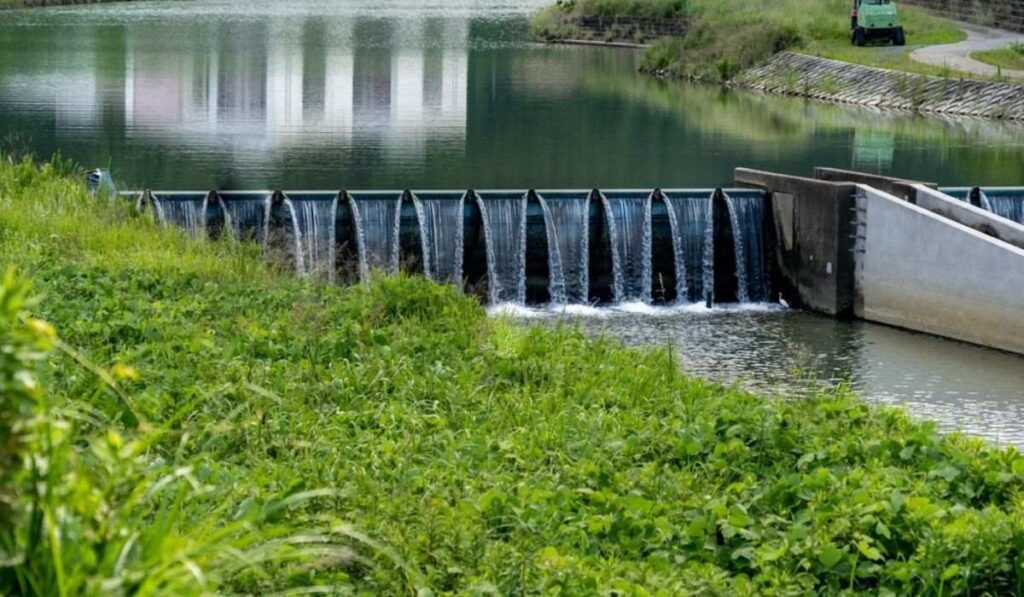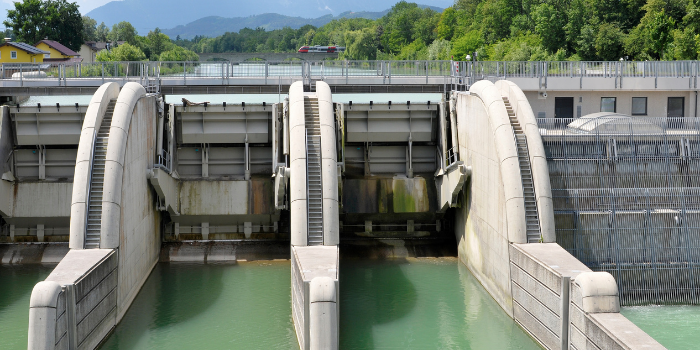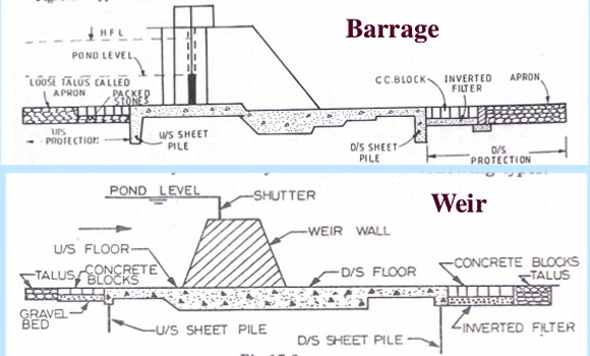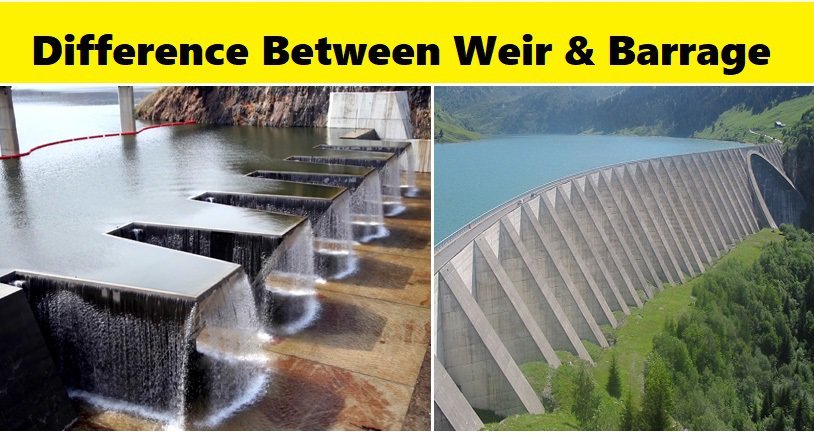In hydraulic engineering, weirs and barrages are vital structures used for water control in rivers and canals.
Both are built to regulate flow, maintain water levels, and divert water for irrigation, power generation, or flood control.
Although they may look similar, there are clear differences in design, purpose, and operation.
Understanding these differences is essential for civil engineers, construction professionals, and students preparing for government engineering exams.
This article provides a detailed comparison between weirs and barrages with examples, types, functions, and applications in Indian water resource projects.
What is a Weir?

A weir is a barrier constructed across a river or stream to raise the water level on the upstream side.
It controls the flow by allowing excess water to pass over its crest.
Weirs are generally fixed structures with no adjustable gates.
They are common in small irrigation projects, river training works, and hydropower stations.
Key Features of a Weir:
- Fixed crest with no movable control gates
- Allows water to overflow freely
- Used mainly for flow measurement and diversion
- Built with masonry, concrete, or stone
What is a Barrage?

A barrage is a gated structure built across a river to control and divert water.
It has adjustable gates on its crest, which can be opened or closed to regulate the water level and flow.
Barrage gates are supported by piers and operated mechanically.
They are common in large irrigation projects and flood control systems.
Key Features of a Barrage:
- Equipped with adjustable gates
- Greater control over water flow
- Suitable for large-scale irrigation and navigation projects
- Requires regular maintenance of gates and machinery
Difference Between Weir and Barrage

| Parameter | Weir | Barrage |
|---|---|---|
| Structure Type | Fixed crest without gates | Adjustable crest with gates |
| Flow Control | Water flows over the crest naturally | Gates control the water level and flow |
| Construction Cost | Generally lower | Higher due to mechanical gates |
| Suitability | Small rivers and streams | Large rivers and heavy flows |
| Operation | No moving parts, minimal maintenance | Requires operation of gates and regular maintenance |
| Flexibility | Less flexible in flow control | Highly flexible, can adapt to seasonal needs |
| Sediment Management | Less control over silt deposition | Gates can be operated to flush silt |
| Examples in India | Haridwar Weir on Ganga Canal | Farakka Barrage on Ganga River |
Functions of Weirs and Barrages

Both weirs and barrages serve important purposes in water resource engineering:
- Divert water to canals for irrigation
- Measure river discharge
- Maintain upstream water levels for water supply
- Regulate river water levels
- Divert water for irrigation, municipal, and industrial use
- Control floods and improve navigation
- Manage sediment and silt deposition
Also Read When and Where to Use Pile Foundations in Construction: A Complete Guide for Engineers and Builders
Advantages and Disadvantages
Advantages of Weirs:
- Simple design and construction
- Low cost and minimal maintenance
- Useful for small-scale irrigation
Disadvantages of Weirs:
- Limited control over water flow
- Ineffective for large rivers or variable flows
- Susceptible to overtopping during floods
Advantages of Barrages:
- Greater flexibility and control
- Suitable for large-scale irrigation and navigation
- Effective in sediment management
Disadvantages of Barrages:
- High initial cost
- Requires skilled operation and regular maintenance
- Vulnerable to mechanical failures
Applications in India
Weir Applications:
- Haridwar Weir on Ganga Canal – for irrigation in Uttar Pradesh
- Mettur Weir in Tamil Nadu – for water supply and irrigation
Barrage Applications:
- Farakka Barrage, West Bengal – to maintain navigable depth in Hooghly River
- Bhakra Barrage, Punjab – for irrigation and flood control
Conclusion
The difference between a weir and a barrage lies mainly in their ability to control water flow.
A weir is a fixed structure ideal for small-scale projects, while a barrage offers flexible flow control for large-scale irrigation and flood management.
In Indian construction and water resource engineering, selecting between the two depends on river size, project scale, cost, and maintenance requirements.
Civil engineers must carefully evaluate hydraulic conditions, sediment load, and operational needs before deciding the appropriate structure.
FAQs on Weir and Barrage
Q1. Which is more expensive, a weir or a barrage?
A barrage is more expensive due to mechanical gates and operational systems.
Q2. Can a weir be converted into a barrage?
Yes, in some cases, gates can be added to an existing weir to convert it into a barrage.
Q3. Why are barrages preferred for large rivers?
Because they offer flexible control over flow, sediment, and navigation needs.
Q4. Which structure requires more maintenance?
A barrage requires more maintenance due to gates and mechanical equipment.
Q5. Are weirs still used in modern projects?
Yes, especially in small irrigation projects and for flow measurement purposes.










